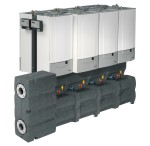
Since it was first developed around 20 years ago, the concept of sustainable development has suffered from a flood of definitions which has led to a great deal of confusion about what it actually means as well as damaging its credibility and diluting its impact.
What is sustainability?
The most commonly accepted definition of sustainability is the one conceived in 1987 by the United Nations World Commission on Environment and Development. The Brundtland Commission report, which resulted from a decisive meeting of this organisation, came up with this: “Sustainable development meets the needs of the present without compromising the ability of future generations to meet their own needs.”
It is possible to draw two conclusions from this straightforward and clear-cut statement. These are that a sustainable process must:
- Be based on resources that will remain un-exhausted over a sensible term.
- Not generate unacceptable pollution.
In other words, if the solution to the problem of climate change is sustainability, then the solution itself must also be sustainable. That is why I strongly advocate the specification of condensing boilers in heating systems.
Low emissions
Condensing technology is inherently more sustainable than other forms of heating because it has low NOx and carbon emissions, which helps to combat global warming, and it also dramatically improves a building’s energy efficiency, thus reducing fuel bills.
But the benefits of condensing boilers don’t stop there. They are also relatively cheap to buy; can be sited virtually anywhere; comprise familiar, well-tested technology; generally have excellent fault diagnosis facilities, and are easy to install (making them more likely to be fitted than many of the so-called renewable technologies that are appearing on the market).
The result is a helpful double whammy – not only will more jobs get completed because condensing technology is cheaper and easier to install, but the energy efficiency of the technology will also release money for even more energy saving and greenhouse gas reducing measures to be taken.
How it works
After all, projects that don’t go ahead because of excessive cost save no greenhouse gases and strategies that are too costly per project are not sustainable strategies.
The operating principles behind condensing boilers are simple. They work on the basis of recovering as much as possible of the waste heat which is normally rejected to the atmosphere from the flue of a conventional, non-condensing boiler. This is accomplished by using an extra-large heat exchanger, or sometimes two heat exchangers, within the boiler which maximises heat transfer from the burner as well as recovering useful heat which would normally be lost with the flue gases.
Indeed, a condensing boiler will always have a better operating efficiency than a conventional non-condensing one due to its larger and more efficient heat exchanger.
It will also result in fewer emissions of harmful greenhouse gases such as carbon dioxide and NOx. For example, our own Remeha condensing boiler offers potential NOx and carbon savings of more than 80% and up to 50% respectively. This means that, say, 500 schools in the UK using condensing boilers could produce annual gas savings of 4,194,500 cu m and electrical savings of 351,999 kWh @ 33% efficiency.
So using condensing boilers results in environmental benefits plus total financial savings per year of a staggering £1,200,000 compared with pressure jet boilers. And these savings would be around 25% higher if the comparison was made against old atmospheric boilers.
The Remeha boiler also increases the value of the end user’s carbon and NOX saving pound. It produces NOx at <37mg/kWh @ 91% GCV compared with a traditional atmospheric boiler nearing the end of its service life which pumps out NOx at around 180 to 250mg/kWh @ 50% GCV. A pressure jet boiler's NOx emissions are around 160 to 220mg/kWh @ 80% GCV and a new wood-burning boiler using pellets as fuel produce NOx of around 220mg/kWh @ 80% GCV.
NOx gases – comprising NO, NO2 and N2O – are many times more effective at trapping heat in the atmosphere than CO2 and hang around in the atmosphere for approximately 150 years. So the NOx gases produced today will affect the atmosphere until the year 2158; hardly a great legacy to pass on to our children.
However, emissions are only one side of the equation. More than 55% of losses occur between the power station and the end user’s property. Losses in transmission and distribution networks make siting flexibility a critical consideration in the specification of any heating product.
Network losses are estimated to amount to 4 to 10% of electricity generated making them the single biggest consumer of electricity. Therefore, anything that manufacturers can do to increase siting flexibility has to be welcomed. For example, we have designed our Gas 110 Eco condensing boiler to fit into the footprint of one of the most popular old boiler designs so that the installer can fit the latest boiler technology directly into the space in which the old, inefficient boiler used to stand.
This means that customers are effectively spending their money directly on reducing emissions and not wasting it on extra pipe work, fittings and other paraphernalia associated with extending the heating network.
Emission impossible?
Any greenhouse gas reduction strategy for heating should take account of the following considerations:
- The need for high efficiency up to 110% NCV.
- A wide range of modulating output, say between 18 and 100%.
- Excellent low NOx performance of <35-<32 mg/kWh.
- The ability to retrofit easily by offering a small footprint, siting flexibility and fast, simple installation.
- Room sealed/modular/conventional flue options.
- Modular/cascade packages.
